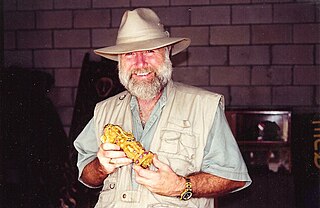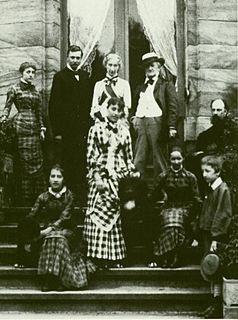Related Research Articles

A shipwreck is the wreckage of a ship that is located either beached on land or sunken to the bottom of a body of water. Shipwrecking may be intentional or unintentional. Angela Croome reported in January 1999 that there were approximately three million shipwrecks worldwide.

The second USS Oneida was a Mohican-class screw sloop-of-war in the United States Navy. During the Civil War, she destroyed the CSS Governor Moore and served in blockade operations. She was attached to the Asiatic Squadron from 1867–1870. She sank in 1870 outside Yokohama, Japan after collision with the British steamer Bombay. A court of inquiry, headed by the local British consul, found the officers of Oneida were responsible for the collision, with Bombay's captain being blamed for not staying at the scene to render assistance – a decision that caused some controversy. A less exhaustive U.S. naval court of inquiry laid the blame entirely on the Bombay's actions. Japanese fishing boats saved 61 sailors but 125 men lost their lives. The American government made no attempt to raise the wreck and sold it to a Japanese wrecking company. The company recovered many bones from the wreck and interred them at their own expense. The Japanese erected a memorial tablet on the grounds of Ikegami Temple in Tokyo and held a Buddhist ceremony in the sailors' memory in May 1889.

Edward Lee Spence is a pioneer in underwater archaeology who studies shipwrecks and sunken treasure. He is also a published editor and author of non-fiction reference books; a magazine editor, and magazine publisher ; and a published photographer. Spence was twelve years old when he found his first five shipwrecks.

The family of the composer Richard Wagner:
Johanna was an East Indiaman for the British East India Company (EIC), possibly named for the island of Anjouan, then known as Johanna. She made five voyages for the EIC between c. 1671 and 1681, On her sixth voyage she became the first Indiaman lost on the South African coast when she wrecked on 8 June 1682.

The SS Vienna was built in 1873 during the era when steamers were built with sail rigging. She had a 19 year career marked with maritime incidents including sinking when she was just 3 years old. She sank for her final time in fair weather in Whitefish Bay in Lake Superior after she received a mortal blow when she was inexplicably rammed by the steamer Nipigon. Although there were no deaths when the Vienna sank for the last time, more than 100 years later her wreck claimed the lives of 4 scuba divers, the most of all the wrecks in the Whitefish Point Underwater Preserve that now protects her as part of an underwater museum. Her wreck was stripped of artifacts that resulted in the Michigan Department of Natural Resources seizing her artifacts in a raid on the Great Lakes Shipwreck Museum in 1992. Her artifacts are now on display in this museum as loan from the State of Michigan.

SS John B. Cowle was one of the early Great Lakes bulk freighters known as "tin pans". She was the first of two ships named for prominent Cleveland, Ohio citizen and shipbuilder John Beswick Cowle. In 1909 on her maiden voyage SS Isaac M. Scott rammed John B. Cowle in heavy fog off Whitefish Point. John B. Cowle sank in three minutes, taking 14 of her 24-man crew with her. Artifacts from her wreck were illegally removed in the 1980s. Her artifacts are now the property of the State of Michigan and are on display as a loan to the Great Lakes Shipwreck Museum. The wreck of John B. Cowle is protected as part of an underwater museum in the Whitefish Point Underwater Preserve.
The General Butler was a schooner-rigged sailing canal boat that plied the waters of Lake Champlain and the Champlain Canal in the United States states of Vermont and New York. Built in 1862 and named for American Civil War General Benjamin Franklin Butler, she sank after striking the Burlington Breakwater in 1876, while carrying a load of marble. Her virtually intact wreck, discovered in 1980, is a Vermont State Historic Site and a popular dive site; it was listed on the National Register of Historic Places in 1998.
The O.J. Walker was a cargo schooner that plied the waters of Lake Champlain between New York and Vermont. Built in 1862 in Burlington, Vermont, she hauled freight until sinking off the Burlington coast in a storm in 1895, while carrying a load of brick and tile. The shipwreck, located west of the Burlington Breakwater, is a Vermont State Historic Site, and is accessible to registered divers. It is one of the best-preserved examples of the 1862 class of sailing canal schooners, and was listed on the National Register of Historic Places in 1998.

Gunilda was a steel-hulled Scottish-built steam yacht in service between her construction in 1897 and her sinking in Lake Superior in 1911. Built in 1897 in Leith, Scotland by Ramage & Ferguson for J. M. or A. R. & J. M. Sladen, and became owned by F. W. Sykes in 1898; her first and second owners were all from England. In 1901, Gunilda was chartered by a member of the New York Yacht Club, sailing across the Atlantic Ocean with a complement of 25 crewmen. In 1903, she was purchased by oil baron William L. Harkness of Cleveland, Ohio, a member of the New York Yacht Club; she ended up becoming the club's flagship. Under Harkness' ownership, Gunilda visited many parts of the world, including the Caribbean, and beginning in 1910, the Great Lakes.

The Nettle was a 19th-century Sandy Hook pilot boat built in 1844 by S. Hall of East Boston, Massachusetts for the New York Pilots. She helped transport maritime pilots between inbound or outbound ships coming into the New York Harbor. In 1868, she found the wreck of the bark Henry Trowbridge, and towed her to Sandy Hook. The Nettle, sank in 1876 in the Pensacola Bay. The sunken wreck was removed in 1878 to improve the Pensacola harbor.

The Caleb Curtis was a 19th-century two-masted Boston pilot boat, built in 1859 at Chelsea, Massachusetts for Boston maritime pilots. She well known for her speed. the Curtis was sold to the San Francisco Pilots' Opposition Line in October 1861 and sailed from Boston around Cape Horn and then to San Francisco to become a pilot boat with the San Francisco fleet. She was shipwrecked inside the Bonita Channel in 1867. The Caleb Curtis was repaired, and was able to continue as a pilot boat in San Francisco from 1867 to 1892. She was sold at auction 1892. From 1892 to 1899, she had different owners and sailed the waters of Japan, Socorro Island, Clipperton Island and Tahiti, Hong Kong and Klondike, Yukon. She was shipwrecked at Cape Nome, Alaska in 1899.
References
- ↑ "The Johanna Wagner 1862". www.shipwreck.co.za. Retrieved 2009-11-07.